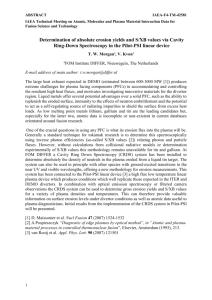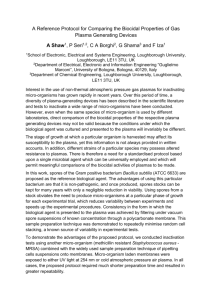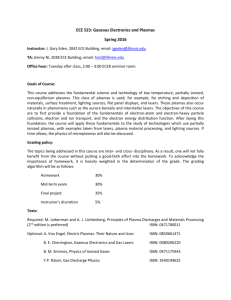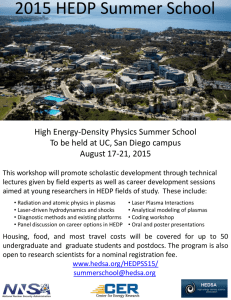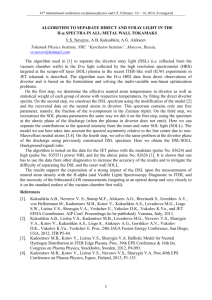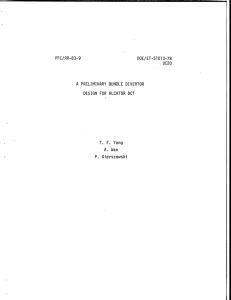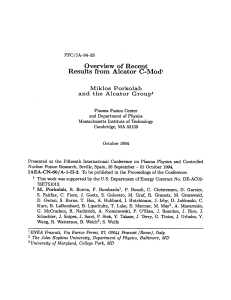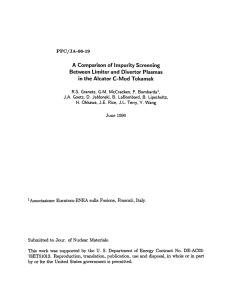This is a title - IAEA Atomic and Molecular Data Unit
advertisement
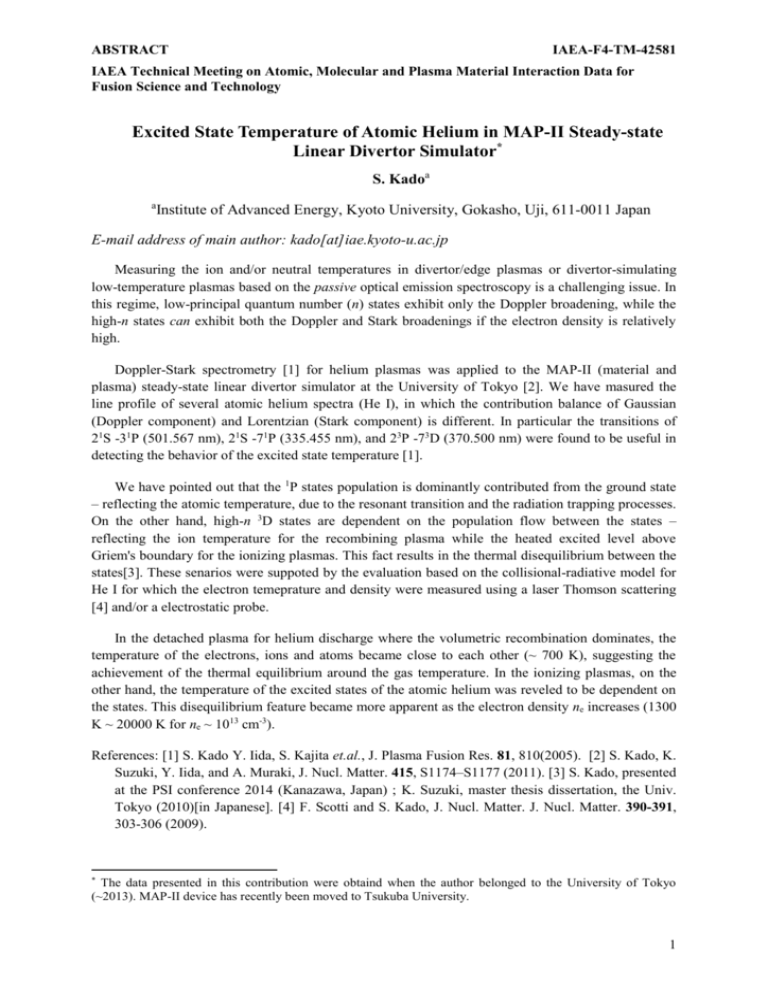
ABSTRACT IAEA-F4-TM-42581 IAEA Technical Meeting on Atomic, Molecular and Plasma Material Interaction Data for Fusion Science and Technology Excited State Temperature of Atomic Helium in MAP-II Steady-state Linear Divertor Simulator* S. Kadoa a Institute of Advanced Energy, Kyoto University, Gokasho, Uji, 611-0011 Japan E-mail address of main author: kado[at]iae.kyoto-u.ac.jp Measuring the ion and/or neutral temperatures in divertor/edge plasmas or divertor-simulating low-temperature plasmas based on the passive optical emission spectroscopy is a challenging issue. In this regime, low-principal quantum number (n) states exhibit only the Doppler broadening, while the high-n states can exhibit both the Doppler and Stark broadenings if the electron density is relatively high. Doppler-Stark spectrometry [1] for helium plasmas was applied to the MAP-II (material and plasma) steady-state linear divertor simulator at the University of Tokyo [2]. We have masured the line profile of several atomic helium spectra (He I), in which the contribution balance of Gaussian (Doppler component) and Lorentzian (Stark component) is different. In particular the transitions of 21S -31P (501.567 nm), 21S -71P (335.455 nm), and 23P -73D (370.500 nm) were found to be useful in detecting the behavior of the excited state temperature [1]. We have pointed out that the 1P states population is dominantly contributed from the ground state – reflecting the atomic temperature, due to the resonant transition and the radiation trapping processes. On the other hand, high-n 3D states are dependent on the population flow between the states – reflecting the ion temperature for the recombining plasma while the heated excited level above Griem's boundary for the ionizing plasmas. This fact results in the thermal disequilibrium between the states[3]. These senarios were suppoted by the evaluation based on the collisional-radiative model for He I for which the electron temeprature and density were measured using a laser Thomson scattering [4] and/or a electrostatic probe. In the detached plasma for helium discharge where the volumetric recombination dominates, the temperature of the electrons, ions and atoms became close to each other (~ 700 K), suggesting the achievement of the thermal equilibrium around the gas temperature. In the ionizing plasmas, on the other hand, the temperature of the excited states of the atomic helium was reveled to be dependent on the states. This disequilibrium feature became more apparent as the electron density ne increases (1300 K ~ 20000 K for ne ~ 1013 cm-3). References: [1] S. Kado Y. Iida, S. Kajita et.al., J. Plasma Fusion Res. 81, 810(2005). [2] S. Kado, K. Suzuki, Y. Iida, and A. Muraki, J. Nucl. Matter. 415, S1174–S1177 (2011). [3] S. Kado, presented at the PSI conference 2014 (Kanazawa, Japan) ; K. Suzuki, master thesis dissertation, the Univ. Tokyo (2010)[in Japanese]. [4] F. Scotti and S. Kado, J. Nucl. Matter. J. Nucl. Matter. 390-391, 303-306 (2009). * The data presented in this contribution were obtaind when the author belonged to the University of Tokyo (~2013). MAP-II device has recently been moved to Tsukuba University. 1
